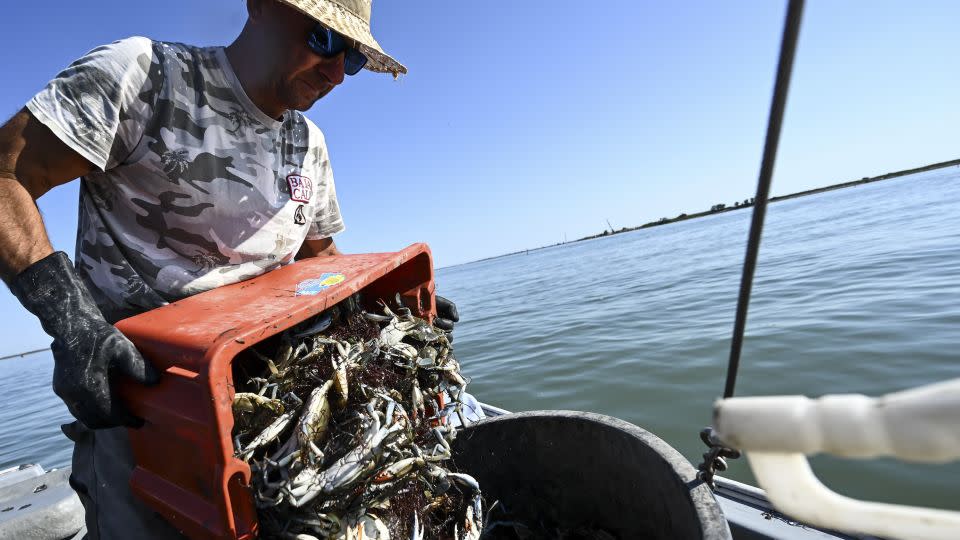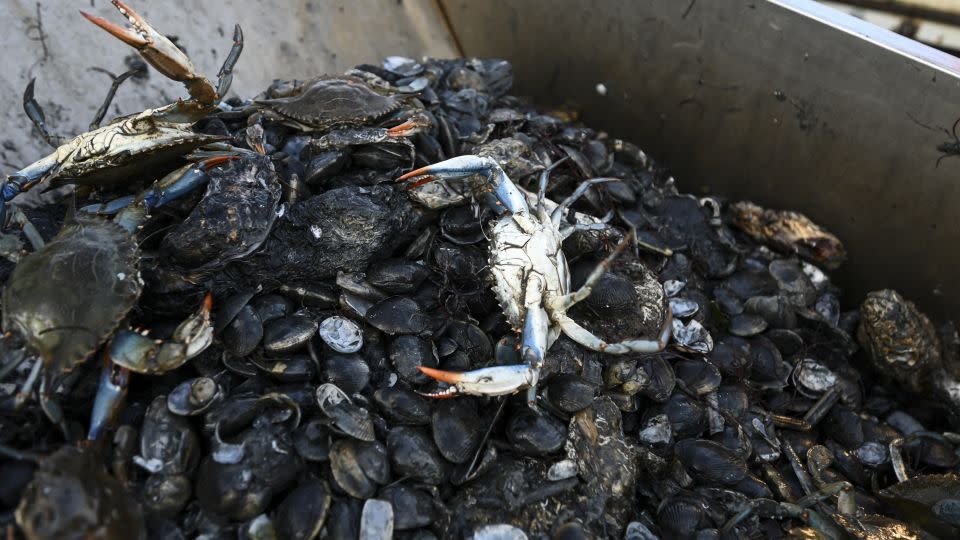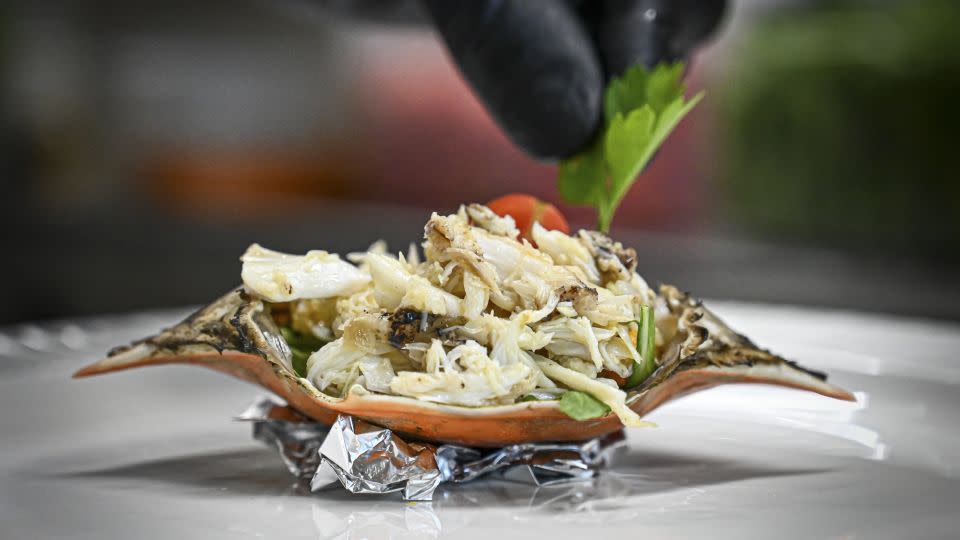Can Italy eat its way out of a blue crab infestation?
Talk of the “invaders” started in the early spring. Along Italy’s northern Adriatic coast and in Tuscan fish farms workers were pulling up their nets and finding them chewed to threads.
Then they began discovering eels with missing heads and harvested clams and mussels with their meat already devoured.
The culprit, which now threatens millions of euros worth of annual profits in shellfish, is the Atlantic blue crab, first introduced in the bilge water of foreign merchant and cruise ships several years ago.
In just a few years, the foreign critters, which can produce two million eggs a year and hold no natural predators in Italy, have reproduced quickly, wiping out the entire clam and mussel harvest for some fishermen.
Agricultural industry group FedagriPesca estimates that more than half the nation’s clams and mussels were eaten by the blue crab this summer.
Culinary solution

Initially, the government recommended catching and destroying the crabs, which are delicacies in other parts of the world.
And it didn’t take long for some fishermen, their nets laden with the tiny beasts, to monetize the mayhem.
Now Italians are turning the killer crustaceans into a culinary delicacy, introducing them into risotto, pasta dishes and even salads.
Italian farmers’ group Coldiretti suggests serving the blue crab with rosemary in a salad, or with sauteed garlic over spaghetti.
“These are some of the dishes recommended by chefs, fishermen and farmers of [Coldiretti] to fight the invasion of the sea killer, which is devastating the national coasts with damage into the millions of euros,” the group said in a statement in support of harvesting and selling the invasive crabs.
“The goal is to help contain the excessive diffusion of the crab, which is taking over the seabed of our coasts, identifying economic opportunities for the hard-hit territories.”
Marine biologists say warmer seawater and above average temperatures mean that the crabs are thriving – and taking over.
They’ve already been found all along Italy’s vast coastline and even in the Po Delta, a UNESCO heritage site known for its vongole veraci clam variety, which has been largely obliterated this summer.
“Usually when the water temperatures drop below 10 C (50 F), this variety of crab doesn’t survive,” Enridca Franchi, a marine biologist and researcher with the University of Siena, says. “But now the crab finds the ideal temperature 12 months of the year.”
‘Natural disaster’

The Italian government has allocated €2.9 million to help sustain the fishermen and fight the invasion in the country, which is Europe’s largest producer of clams.
Although the crabs seem to prefer shellfish like clams, mussels and oysters, they have also eaten into the profits of eel and seabream fishing in Tuscany.
Coldiretti believes that this “natural disaster” is a threat to Italy’s entire fishing industry, warning that the blue crab invasion has already led to the loss of jobs and put those fishermen who rely on clams and mussels out of business this year.
The Italian government’s ruling Brothers of Italy party has proposed potentially converting tuna and other fish canning factories to crab processing plants as a way to essentially “over-fish” the predator in hopes of reducing its presence.
The blue crabs, which have a market value of around €80 a kilogram in the United States and Asia, have not been able to fetch much on the market in Italy, with the fishing federation capping the legally sold price at €10 a kilo.
But at most supermarkets, the going price is less than €6 a kilogram since the supply far outweighs the demand. By contrast, king crab, a rare treat in Mediterranean countries, sells for up to €100 a kilogram.
Blue crab is fast becoming a feature item at restaurants across the country, primarily as a spaghetti sauce with fresh tomatoes.
Italian prime minister Giorgia Meloni was photographed with a plate of the crab in an image shared by her brother-in-law Francesco Lollobrigida, who is also Italy’s minister of agriculture.
Lollobrigida has also posted Facebook videos of his own culinary crab creations, insisting that this predator can be “an economic opportunity for many.”
Selling ‘enemy’ fish

As their popularity grows within restaurants in Italy, animal rights activists are making moves to protect the crabs, particularly the smaller ones, which are allegedly being caught and used as “toys for children.”
Gabriella Gibin from animal rights protection group Coordinamento Tutela Diritti Animali, based in Rovigo, Italy, has denounced the treatment of the blue crabs, claiming that she has seen photographic evidence of the creatures being abused.
“They are put in buckets, tortured until their claws are severed and killed with sticks,” she wrote in a recent Facebook post.
Gibin went on to say that she had also seen evidence of the crabs being caught and released in car parks or along ditches with no access to water. But not all restaurateurs have welcomed this new addition to the food scene.
Lionello Cera, who runs the two-Michelin-starred Antica Osteria Cera di Campagna Lupia, says he has tried it in various dishes, but will not be putting blue crab on his menu anytime soon.
“It is destroying our lagoon and it could be argued that it will soon take the place of the spider crab, so my answer is no,” he said in a recent blog post.
It is also not present at many smaller farmers’ markets. In the Roman neighborhood of Testaccio, one fishmonger told CNN he may offer it eventually, but as long as clams and mussels are still available, he will offer “Italian fare first” before giving in to “selling enemy fish.”
For more CNN news and newsletters create an account at CNN.com

